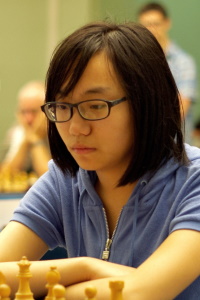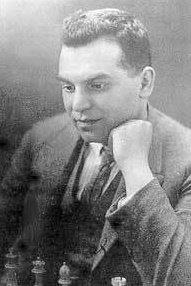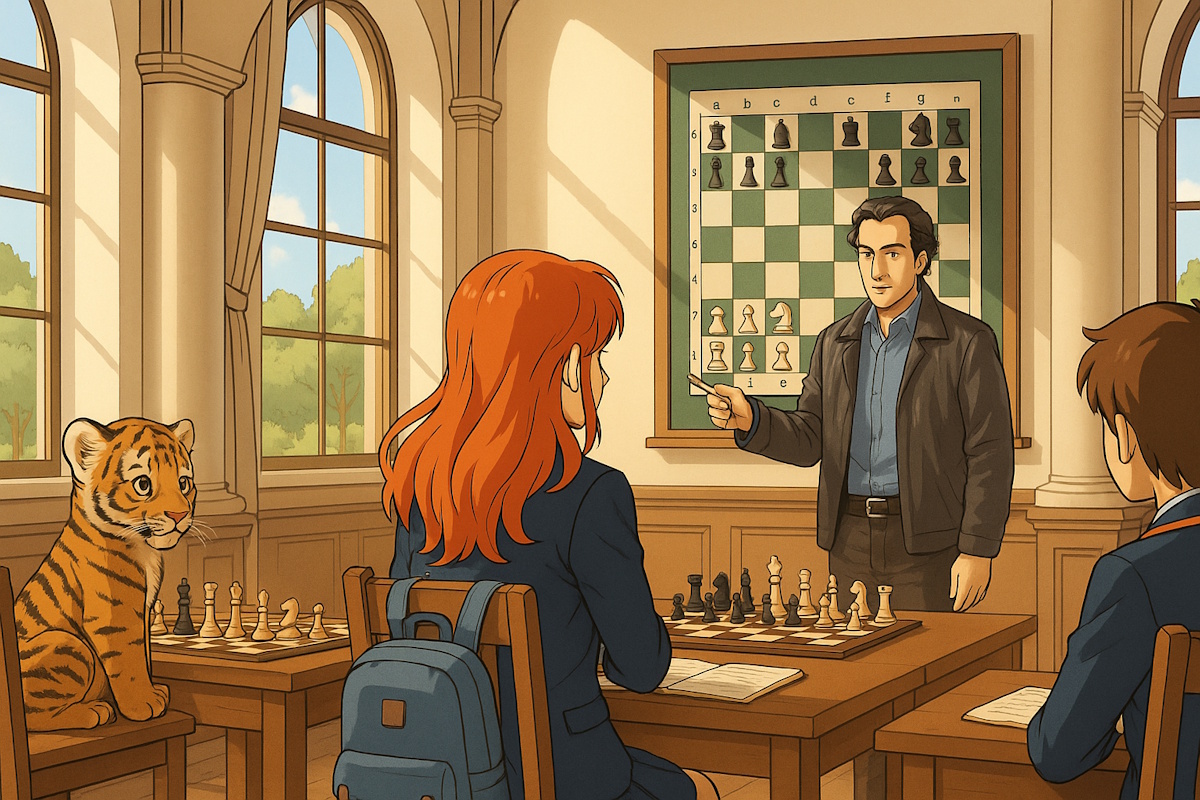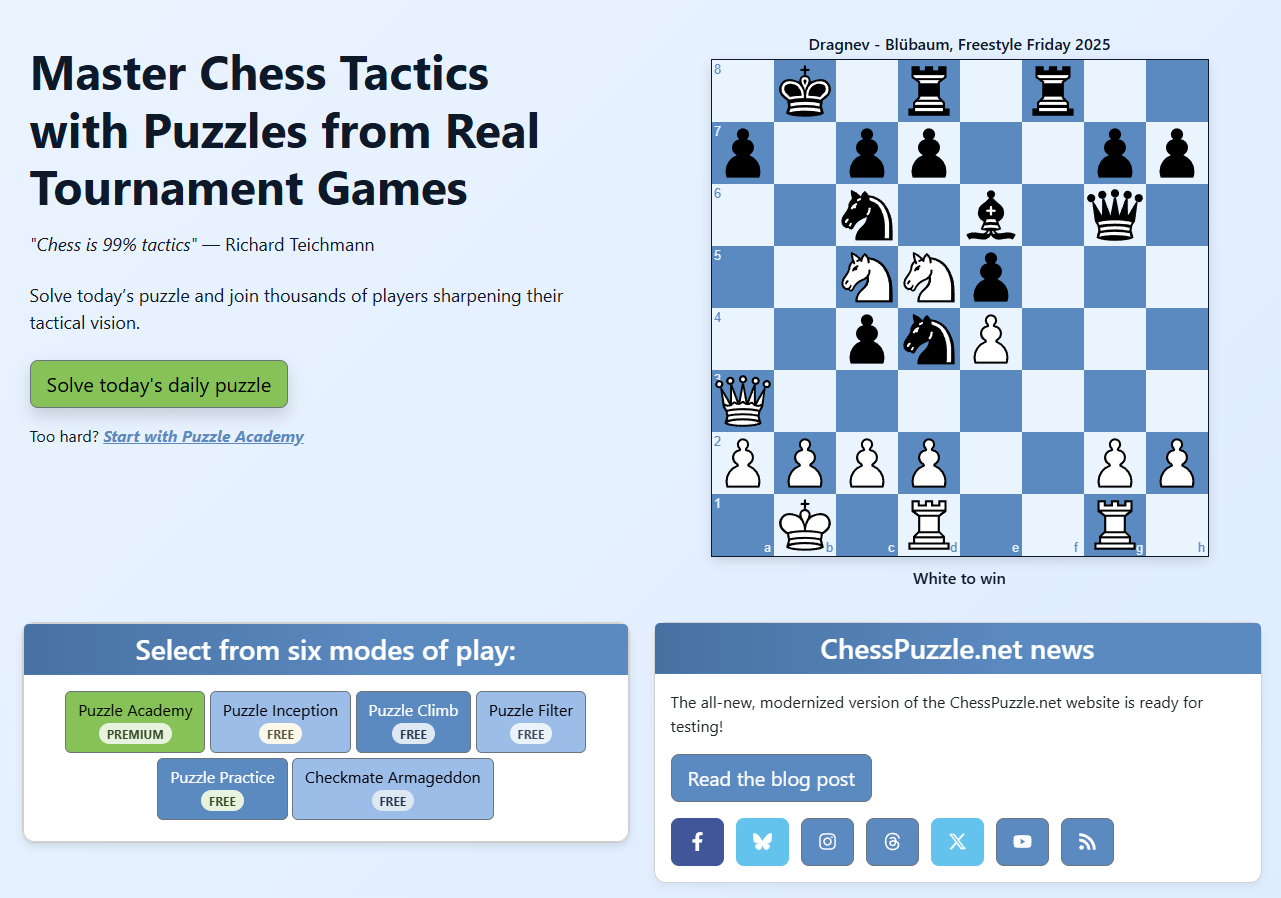ChessPuzzle.net Version 3: Endgames
ChessPuzzle.net Version 3: Endgames
Mastering the Endgame: ChessPuzzle.net Version 3 has improved endgame puzzles, and for the first time endgame studies
I'm excited to announce the release of version 3 for endgame puzzles on ChessPuzzle.net, supporting more complex endgame puzzles and even endgame studies, designed to deepen your understanding of chess endgames.
This continues my work on the new algorithm which started with checkmate puzzles. All improvements are now also applied to endgame puzzles, including advanced neural network-based Stockfish, multiple reply moves, and an improved opponent. See the previous blog post for more details.
This update includes more than 40.000 endgame puzzles and training positions. All existing endgame puzzles were updated, and many new ones were added.
Improvements to Endgame Training Positions
Some time ago I launched "Endgame training positions". These are endgame positions which are not puzzles in the sense that you don't have to find a forced sequence of moves, but it is still not easy to win. You can read more about endgame training positions in this blog post.
Previously, endgame training positions were supported for positions up to five pieces. With this update, endgame training positions are now supported with up to six pieces.
Combining Puzzles with Endgame Training Positions
Endgame puzzles can now start with a series of forced moves, resulting in a position that will require a complicated endgame win like in a training position. These positions are labelled "Win the endgame" or "Draw the endgame". In the solution view, the latter part which is not forced is shown with an example line (as in solutions of training positions), starting with the comment "with a winning (or drawing) endgame, for example".
This combination of puzzles with training positions allows more complicated endgame situations to be solved interactively. Here are some examples:
Click the diagram to solve this puzzle. This is from the game between Anna Muzychuk and Lei Tingjie at the Candidates Tournament in Toronto 2024. Anna Muzychuk had the advantage for a long time, but the last move was inaccurate and allowed Lei Tingjie to escape with a draw:
Black to draw the endgame

Anna Muzychuk - Lei Tingjie, Toronto 2024
The following position is from the same game a few moves earlier. How could Anna Muzychuk have won?
White to win the endgame

Anna Muzychuk - Lei Tingjie, Toronto 2024
Inclusion of Endgame Studies
Endgame studies are endgame positions that are not from a game, but created and analyzed by a composer. They are similar to a puzzle, but are not from tournament games. Throughout the long history of chess, studies contributed to endgame theory by enhancing our knowledge. Many old studies are key positions in today's endgame training.
With ChessPuzzle.net version 3, for the first time we can include endgame studies for you to solve interactively. As far as I know, ChessPuzzle.net is the first website to feature interactive solving of endgame studies based on computer analysis.
Here are some famous examples of endgame studies:
White to defend

Study by Réti, 1921
Click the diagram to solve this pawn endgame study by Richard Réti.
It looks as if White is completely lost, because the White king is much too far away from Black's passed pawn, while the Black king very close to the white passed pawn and can stop it easily. Réti published this study in 1921 and showed that White can still draw the game. It became one of the most famous endgame studies, because of its impossible looking task and elegant solution.
White to win
Study by Saavedra and Barbier, 1895
How can White win with the pawn against the rook? Click the diagram to solve this study by Saavedra and Barbier.
This study was initially published as a draw by Barbier, but Saavedra found a surprising win for White. It became one of the most famous endgame studies, because of its surprising depth despite the simple looking position.
How to play the new endgame puzzles and training positions
In the Puzzle Filter, select the task "Endgame training win" or "Endgame training draw" to get a mix of training positions and win/draw the endgame puzzles. Note that because this is a new feature, these tasks are still marked as "experimental" and are not included in Puzzle Practice and Puzzle Climb.
The endgame puzzles in Puzzle Academy have all been updated. We are working on adding more endgame studies, which will be helpful in extending the Puzzle Academy endgame course with more endgames and guides.
Here is a list with some pawn endgame studies by Nikolai Grigoriev. Note that many of them are very difficult!
Work on the algorithm continues
The work on updating the puzzle generation algorithm to version 3 continues for the remaining puzzles.
I hope you enjoy the updated endgame puzzles and studies. If you have any questions or feedback please reach out to me.

Tuesday, July 2, 2024
Last updated: Wednesday, September 25, 2024
Martin Bennedik
Founder of ChessPuzzle.net, International Correspondence Chess Master
Related posts
Introducing Clubs on ChessPuzzle.net
We’re excited to launch the public beta of Clubs — a new way for coaches, schools, and chess clubs to train and grow together on ChessPuzzle.net.Updates to Puzzle Academy and Checkmate Armageddon
Following the recent major update of the website, we've added some new features to Puzzle Academy and improved the difficulty curve of Checkmate Armageddon.ChessPuzzle.net Version 3: The Website
I'm thrilled to announce that after several months of dedicated work, the all-new, modernized version of ChessPuzzle.net is now live for everyone! I've upgraded everything under the hood and refreshed the look and feel of your favorite chess puzzles platform.

